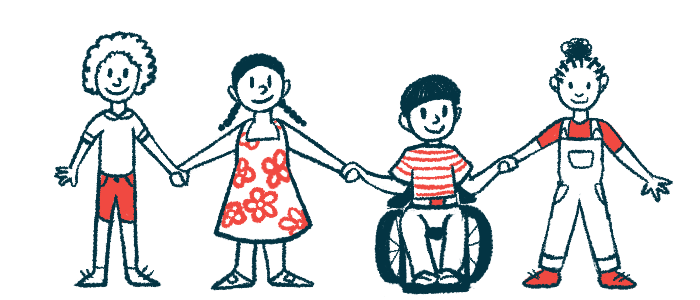Livmarli eases itch for broader pediatric population with Alagille
Children in real-world study treated via expanded access, commercial programs

Livmarli (maralixibat) safely and effectively eases itching caused by Alagille syndrome in children who would have been excluded from the clinical trials that led to the therapy’s approval, a study shows.
These real-world findings, covering an expanded access program and commercial use of Livmarli in Alagille patients, support the therapy’s benefits in a broad patient population.
The study, “Real-world experience of maralixibat in Alagille syndrome: Novel findings outside of clinical trials,” was published in the Journal of Pediatric Gastroenterology and Nutrition. It was supported by Mirum Pharmaceuticals, which sells Livmarli.
Alagille syndrome is a disease in which bile — a fluid produced by the liver to help break down fats in the small intestine — cannot drain properly from the liver. Impaired bile flow, or cholestasis, leads to bile buildup in the liver and leakage into the bloodstream, resulting in cholestatic pruritus (itching).
Livmarli works to reduce buildup of bile
Taken as an oral solution, Livmarli blocks the action of a protein called ileal bile acid transporter. This prevents bile from going back into the liver and increases the amount of bile that is removed in stool, reducing the buildup of bile and itching.
In the U.S., Livmarli is approved to treat itching in people with Alagille syndrome who are 3 months or older. In Europe, it is approved for those as young as 2 months. The approvals were based on data from clinical trials with strict criteria to enter.
However, some patients have received Livmarli “under broader circumstances as part of an expanded access program or commercially,” the researchers wrote. Expanded access programs allow access to investigational therapies outside clinical trials before their potential approval.
“The expanded access and postapproval setting inform a real-world understanding of effectiveness and safety” of Livmarli, the researchers wrote.
Here, researchers in the U.S. reported the cases of eight children, ages 2-12 years, with Alagille syndrome who received Livmarli in those settings. The children would have been excluded from Livmarli trials due to different reasons, including prior biliary diversion surgery, which redirects bile flow, reduction of simultaneous anti-itch/cholestatic medications, use of feeding tubes, and/or consideration for liver transplant.
The first child, an 11-year-old girl, had severe itching since infancy despite various medications and biliary diversion. Three months after starting on Livmarli, her Clinical Scratch Scale (CSS) dropped from four (very severe itch) to zero (no itch at all). Itching relief lasted for up to nearly two years, without worsening in cholestasis.
[Livmarli] may be effective and well tolerated in patients with [Alagille syndrome] in broader clinical contexts than previously reported.
Itching went away completely for several children treated with Livmarli
For a 7-year-old girl, itching was controlled initially with ursodeoxycholic acid (UDCA) and the antibiotic rifampicin. When itching returned, she was started on Livmarli. Despite stopping her other medications, itching went away completely with Livmarli alone.
A 12-year-old girl had trouble sleeping due to itching, despite medications, including UDCA, that provided only moderate relief during the day. After starting on Livmarli, her itching went away completely, allowing her to sleep well without the need for other medications.
Another girl, 11, had persistent itching despite having been on multiple medications. With Livmarli, her itching lessened, and her family decided to stop other medications. Over time, her itching continued to ease, and her CSS score was one (mild itch) at last follow-up.
A 2-year-old girl developed severe itching shortly after birth. Among other treatments, she was placed a feeding tube to help her ingest enough calories and nutrients to support growth. After Livmarli, her itching eased to a CSS score of one, despite slight fluctuations over time.
For a 3-year-old boy, his itching did not respond well to medications and was worsening over time. After starting treatment with Livmarli through a feeding tube, his itching gradually eased and eventually went away. The relief lasted for at least 22 months (nearly two years).
Besides experiencing hard-to-treat severe itching, a 2-year-old boy had other health issues, leading doctors to consider a liver transplant for him. After starting Livmarli, however, his itching resolved completely, and there was no longer an urgent need for a transplant.
The last child, a 7-year-old girl, had poor quality of life due to very severe itching, despite trying several treatments. After starting on Livmarli, her itching eased, and her CSS score was one. This allowed her to sleep better and reduce the need for other medications. She was removed from a liver transplant waitlist because of her improvement.
No serious side effects reported
As was the case in trials, Livmarli was well tolerated, without side effects such as vomiting, diarrhea, or abdominal pain. While some children had elevated liver enzymes, a sign of potential liver damage, the levels were interpreted as normal fluctuations seen in Alagille.
These findings “provide insights into the real‐world application and effectiveness of the medication,” the researchers wrote, suggesting Livmarli “may be effective and well tolerated in patients with [Alagille syndrome] in broader clinical contexts than previously reported.”
Still, more research is needed to confirm that Livmarli “can consistently be effective,” they concluded.







